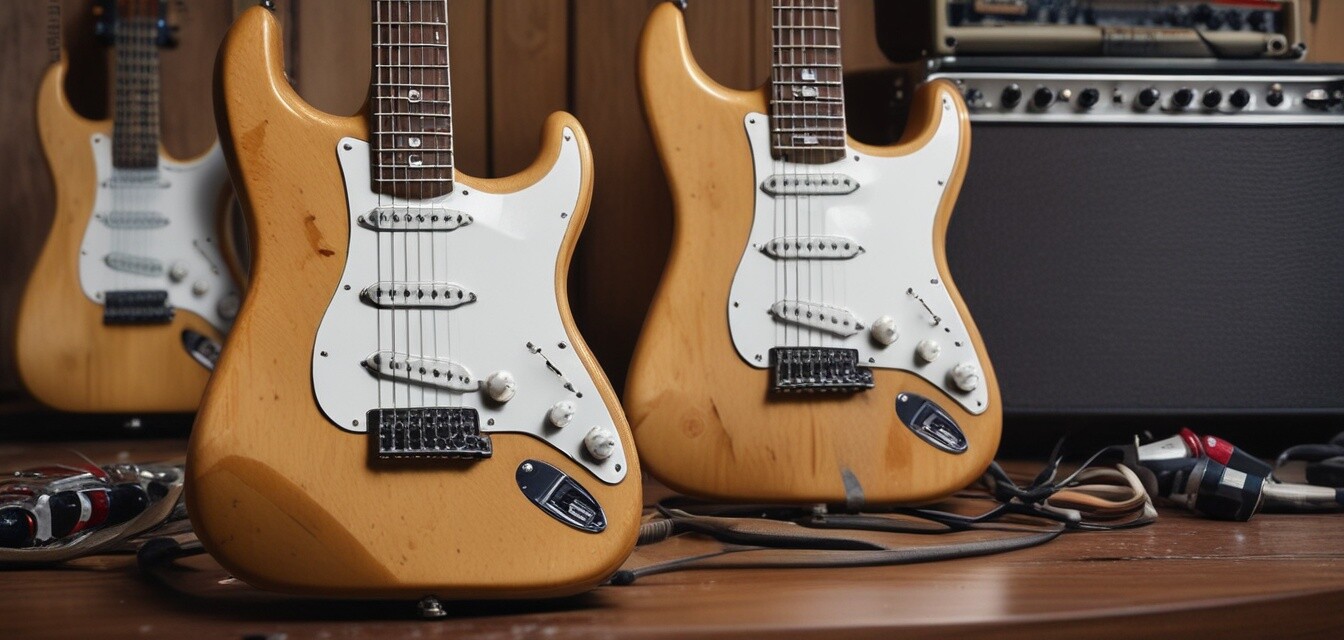
Celebrating 60 years of the Fender Stratocaster
Key Takeaways
- The Fender Stratocaster has been a game-changer in guitar design since its debut.
- Many legendary musicians have used the Stratocaster, influencing music over decades.
- The Stratocaster has evolved but stayed true to its original design and capabilities.
- It continues to be a popular choice for both new and seasoned guitarists.
The Fender Stratocaster is more than just a guitar; it's a cultural icon that has shaped music for over six decades. Since its introduction in 1954, it has become a staple in various music genres, from rock and blues to country and jazz. In this retrospective, we will explore its evolution, its impact on musicians, and the stories behind the instrument that has become synonymous with guitar excellence.
The birth of an icon
When Leo Fender introduced the Stratocaster in the mid-1950s, it represented a revolutionary leap in guitar technology. With its contoured body, three single-coil pickups, and a tremolo system, the Stratocaster was designed for comfort and versatility. The innovative design allowed musicians to create a range of sounds, setting it apart from its predecessors.
The influential players
Many iconic musicians have embraced the Fender Stratocaster, creating unforgettable music and inspiring generations. Here are some of the most prominent players who have left their mark with this legendary instrument:
| Artist | Notable Hits | Impact on Guitar Music |
|---|---|---|
| Jimi Hendrix | Purple Haze, Voodoo Child | Revolutionized the use of feedback and distortion in rock music. |
| Eric Clapton | Layla, Wonderful Tonight | Known for his expressive playing and blending blues with rock. |
| David Gilmour | Comfortably Numb, Wish You Were Here | Use of unique tones and solos has inspired countless guitarists. |
| Stevie Ray Vaughan | Texas Flood, Pride and Joy | Revived blues rock, showcasing power and brilliance of the Stratocaster. |
Evolution through the decades
The Fender Stratocaster has undergone various changes since its launch, adapting to the needs and preferences of musicians. Let's take a look at its evolution over the years:
1950s: The original design
The inaugural Stratocaster featured a solid body, bolt-on neck, and a range of vibrant colors. The incorporation of the tremolo bridge allowed for expressive pitch bending.
1960s: Popularity explosion
As the Stratocaster gained popularity among iconic artists, its design began to evolve. The introduction of the rosewood fingerboard and updated pickups allowed for better sustain and tones, making it a favorite for rock musicians.
1970s and 1980s: Diversification
This period witnessed the introduction of various models and special editions, further expanding the Stratocaster's appeal. Musicians experimented with modified electronics and unique finishes.
1990s to present: Modern advancements
With advancements in technology, the Stratocaster continues to thrive. Modern pickups, innovative materials, and improved manufacturing have kept it relevant. Special editions and artist signature models highlight its versatility while catering to diverse playing styles.
The Stratocaster in today's music
Today, the Fender Stratocaster remains a choice instrument for countless musicians. From up-and-coming artists to seasoned veterans, its presence is felt across genres. The Stratocaster's unique sound and adaptability make it a staple in recording studios and live performances alike.
Tips for choosing your Stratocaster
- Consider the music style you play. Different Stratocaster models cater to various genres.
- Try different pickup configurations to find the best sound for your preferences.
- Visit your local music shop to test out various models in different price ranges.
- Look for limited edition models if you want something truly unique.
- Focus on comfort. The Stratocaster's body shape and neck profile may vary across models, impacting playability.
Pros
- Versatile sound across various genres.
- Comfortable body design.
- Rich history and pedigree in music.
- Wide range of available models and custom options.
Cons
- Can be more expensive than other guitar brands.
- Some players prefer other pickup configurations.
Conclusion
The Fender Stratocaster has seen significant evolution since its inception, reflecting the creativity of musicians and technological advancements in guitar making. It has earned its rightful place in music history, influencing genres and inspiring artists worldwide. As we celebrate 60 years of the Stratocaster, we look forward to witnessing its continued legacy in the music community. To explore more about different types of guitars, check out our fender electric guitars page or keep up with the latest trends through our news and trends section.
For more insights, consider browsing our buying guides or diving into expert tips found in our expert tips category.
As the world of music evolves, the Stratocaster remains a symbol of innovation, creativity, and a passion for sound.